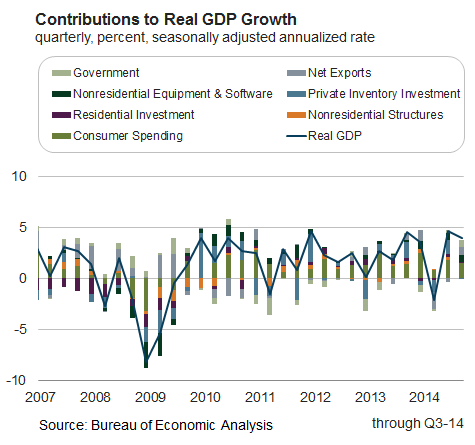There is little doubt that technology has changed the way we live. Online social networks like Twitter and Facebook have changed the way we communicate, and the rise of e-commerce has given us the convenience to shop from the comfort of our homes. Personally, I cannot live without my debit card, and this year I did more online holiday shopping than ever before. Move aside Black Friday, because Cyber Monday is my new best friend! 60 percent off video games? Yes, please. Everything in stock and guaranteed to arrive in time for the big day? Great. Free shipping? Fantastic! And the best part? I'm on my patio sipping coffee, watching the palm trees sway in the breeze and the duck swim in the lake while I tap away—on my smartphone.
While most organizations today have an online storefront, not all of the Atlanta Fed's Miami Branch retail contacts are thrilled about this migration. Last month, some businesses discussed the challenges that are arising as technology continues to change consumer buying habits. One change contacts often report is that their customers who shop online are less likely to purchase add-on items like warranties than when they shop in the store. To mitigate this challenge and boost sales of these items, some online sellers suggest to consumers, when they add something to their shopping carts and again when they check out, that they might like to also purchase the add-on items.
According to information released by IBM Digital Analytics, Cyber Monday this year was the busiest online shopping day of the year, with an 8.5 percent increase in sales from 2013's Cyber Monday. Overall online sales during "Cyber Week"— a five-day period from Thanksgiving Day through Cyber Monday—increased by 12.6 percent over the same time period last year, according to IBM. Sales made with mobile devices increased year over year by 27.6 percent, and these transactions drove more than half the online sales throughout Cyber Week.
So why do analysts spend so much time slicing and dicing consumer spending patterns? Mostly because consumer spending accounts for about 70 percent of total gross domestic product (GDP). This year, there is much anticipation as to whether or not the retail sector will do well enough during the holiday season to maintain the momentum that we had seen earlier in the year. According to the second estimate for GDP growth in the third quarter, real GDP expanded at an annualized rate of 3.9 percent, faster than the initial 3.5 percent estimate. Upward revisions were made to consumer spending, private inventory investment, and nonresidential equipment and software, while net exports were revised downward (see the chart).

Will the sales activity from Cyber Week have enough "oomph" to meet estimated GDP growth for this last quarter? We'll find out more when the advanced estimate for fourth-quarter GDP is released on January 30, 2015. Until then, click to shop till you drop!
By Marycela Diaz-Unzalu, a senior Regional Economic Information Network analyst at the Atlanta Fed's Miami Branch



